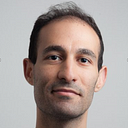Member-only story
How People Actually Behave When They Know Their Genetic Risks
Should you take a DNA test? Science shows knowledge of our genome affects our behavior — and not always for the better.
 Services like 23andMe make it easy to learn about the history hidden inside our genetic code. Although it is fun to learn about our ancestry and whether or not we can smell asparagus in our urine, genetic testing can raise serious questions about our health. Is it helpful to find out that we are likely to suffer from cardiovascular disease or develop Alzheimer’s in our older age?
Services like 23andMe make it easy to learn about the history hidden inside our genetic code. Although it is fun to learn about our ancestry and whether or not we can smell asparagus in our urine, genetic testing can raise serious questions about our health. Is it helpful to find out that we are likely to suffer from cardiovascular disease or develop Alzheimer’s in our older age?
Learning about our specific genetic health profile might help us optimize our behavior and lifestyle to minimize our risks. If we know we have a high risk of cardiovascular problems, perhaps we should hop on a treadmill more regularly and take better care of our diet. On the other hand, learning about a high risk of disease is likely to make us unnecessarily anxious, and the stress may even make our health worse.
To make an informed decision about whether to offer our saliva to genetic testing companies, it helps to know how people behave once they gain knowledge about their genetic predispositions.
One group of researchers at Stanford tested the question directly. They sequenced the DNA of…

